The evolution of Polytetrafluoroethylene (PTFE) – from a niche product used only in high-value applications to a mainstream requirement has been very gradual.
However, over the past two decades PTFE usage seems to have crossed a critical mass, allowing it to become commercially viable in over 200 industrial, consumer and medical applications. And while sheets, rods, coatings and components corner the bulk of the market for PTFE products, PTFE tube and PTFE hose are now emerging as the key growth area.
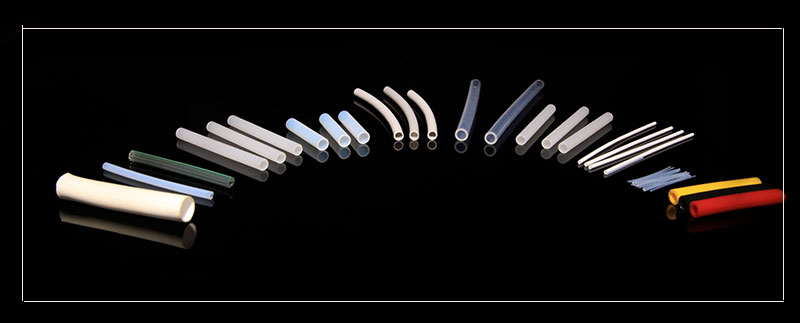
PTFE tube applications
The use of PTFE tube has spread across various applications including automotive, chemical, electrical and medical. Table 1 shows the key properties which outline the versatility of PTFE tube, while Fig 1 shows its uses in various fields.
In automotive applications, the ability of PTFE to withstand temperatures in excess of 250°C makes it an ideal candidate for high temperature fluid transfer.
In medical applications, PTFE tube is in huge demand due to its lubricity and chemical inertness. Catheters employing PTFE tube can be inserted into the human body without fear of reaction or abrasion with any body parts.
In chemical applications – including laboratories – PTFE is an ideal replacement for glass due to its inertness and durability.
In electrical applications, the excellent dielectric properties of virgin PTFE make it well suited for insulating high voltage cables.
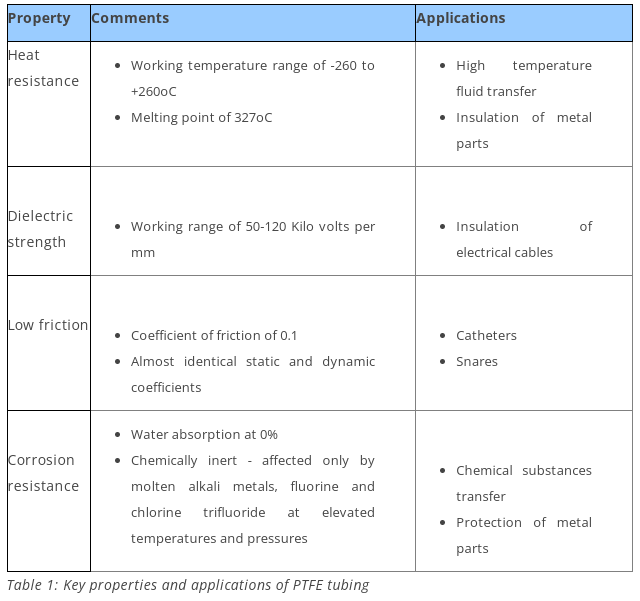
Types of PTFE tube
Depending on the application, PTFE tube is divided into three broad categories – each defined by the tube’s diameter and the wall thickness (see Table 2).
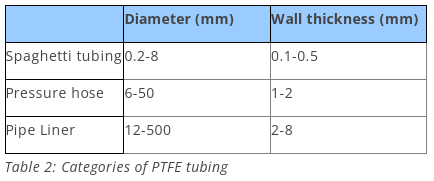
Even within categories, PTFE tube lends itself to different variations, each allowing for a different application (see Table 3):
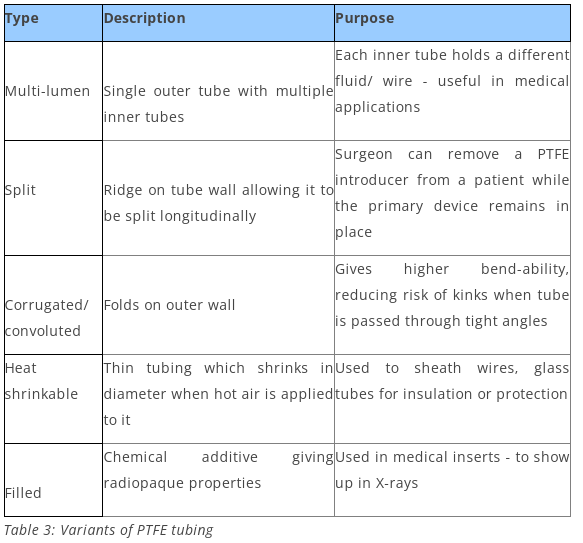
PTFE tube in the medical device market
In general, small diameter spaghetti tube is used in medical applications. The use of PTFE in this area centers on two key properties: lubricity and biocompatibility. Fluoropolymers exhibit very good lubricity compared with other plastics. PTFE is the most lubricious polymer available, with a coefficient of friction of 0.1, followed by fluorinated ethylene propylene (FEP), with 0.2. These two polymers represent the vast majority of all fluoropolymer tube used in medical devices.
The biocompatibility of any polymer used in a medical device is an obvious concern. PTFE excels in this area and has a long history of in vivo use. Medical-grade fluoropolymers should meet USP Class VI and ISO 10993 testing requirements. Of course, processing cleanliness is also an important factor.
Over the past 18 years, Besteflon continously focusing on the manufacture of PTFE Tubes and PTFE hose. As the pioneers in the area of fluoroplastics manufacturing,we pursue the best quality and after-sales service.If you would like to start customizing PTFE tube for your special application, please feel free to contact us!
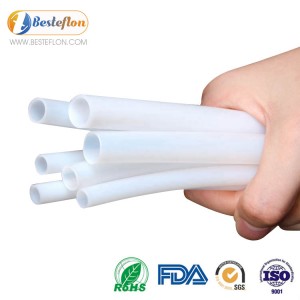
Post time: Jun-12-2023
